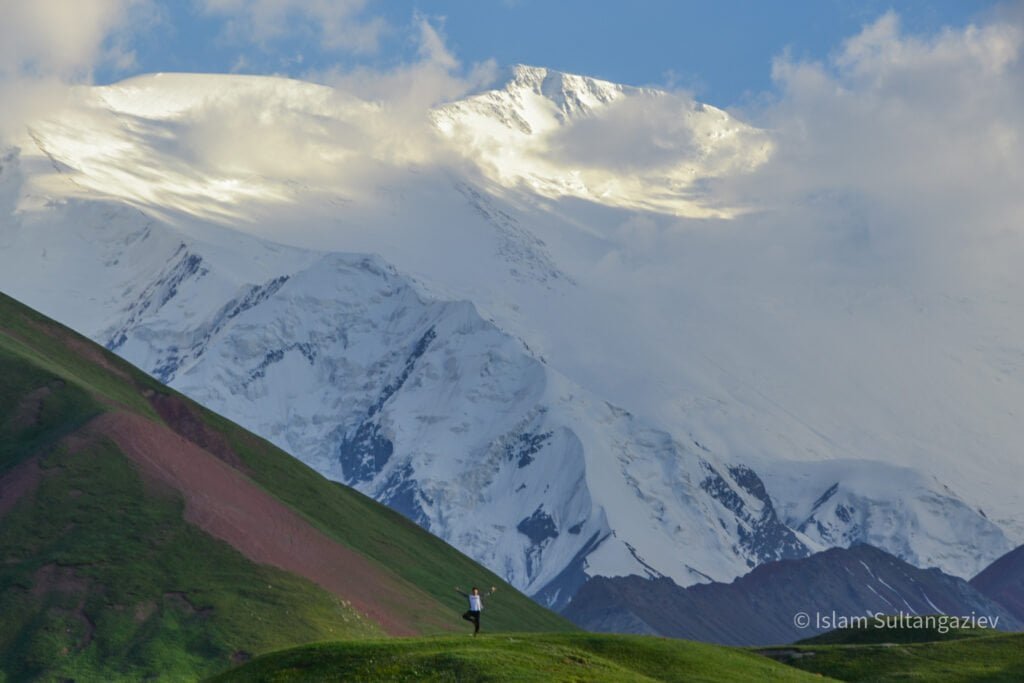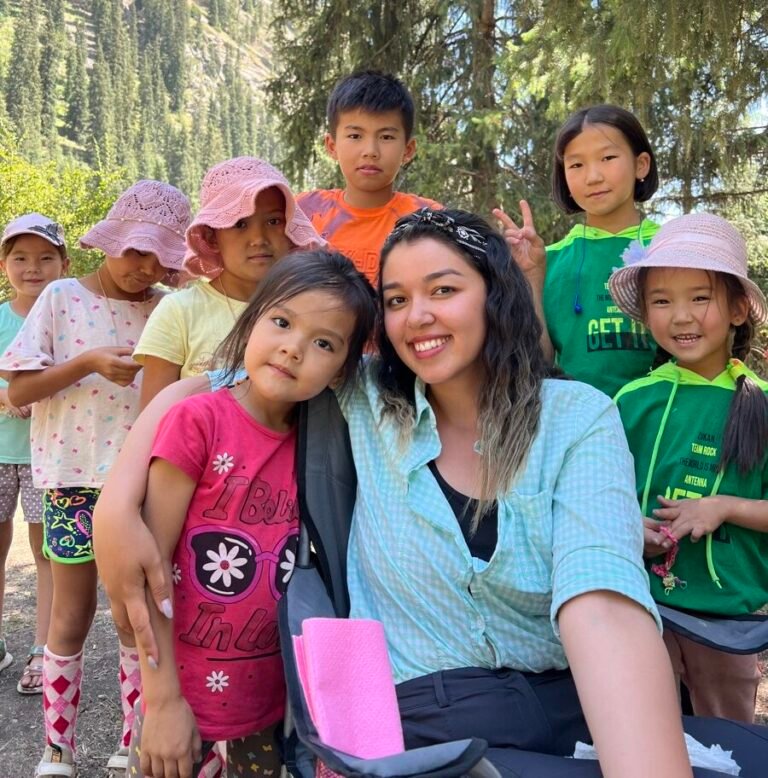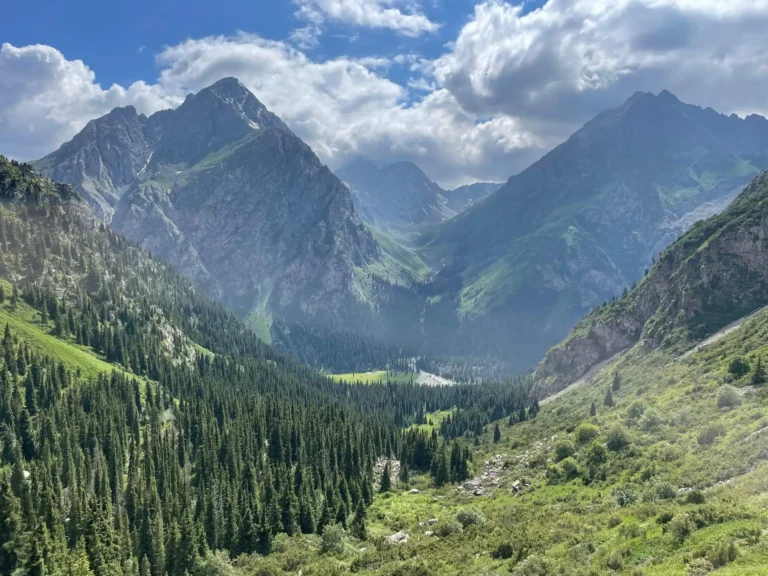Kyrgyzstan is an underrated trekking destination that offers breathtaking landscapes, stunning mountain views, and a unique cultural experience. Kyrgyzstan trekking is an excellent way to explore the country’s natural beauty, meet local people, and experience the nomadic way of life. In this article, we will provide you with a complete guide to Kyrgyzstan trekking, including the best trekking routes, tips for planning your trek, what to expect, and much more.
1. Introduction
Kyrgyzstan is a small country in Central Asia that is often overlooked by tourists. However, this beautiful country is a trekker’s paradise. With its majestic mountain ranges, vast green valleys, and crystal-clear lakes, Kyrgyzstan offers some of the best trekking experiences in the world. Trekking in Kyrgyzstan not only allows you to explore the country’s natural beauty, but it also offers a unique cultural experience. You can stay with local families in their yurts, learn about the nomadic way of life, and taste the delicious Kyrgyz cuisine.

2. Why Go Trekking in Kyrgyzstan
Kyrgyzstan is an excellent trekking destination for several reasons. Firstly, the country has a diverse landscape, including high mountain ranges, green valleys, and alpine lakes. Secondly, trekking in Kyrgyzstan allows you to experience the country’s rich nomadic culture. You can stay with local families, ride horses, and learn about the traditional way of life. Lastly, trekking in Kyrgyzstan is affordable and not crowded, so you can enjoy the natural beauty without the crowds of tourists.
3. Best Trekking Routes in Kyrgyzstan
Kyrgyzstan has numerous trekking routes, but we have selected some of the best routes for you to explore:
Ala-Kul Lake Trek
The Ala-Kul Lake Trek is one of the most popular trekking routes in Kyrgyzstan. The trek starts in the town of Karakol and takes you through the stunning Karakol Valley to the beautiful Ala-Kul Lake. The lake is surrounded by towering snow-capped mountains and is a sight to behold.
Alay Valley Trek
The Alay Valley trek is a popular trekking route located in the Pamir Mountains of Central Asia. The trek takes you through the stunning landscapes of the Alay Valley, which is known for its majestic mountains, pristine lakes, and traditional Kyrgyz villages.
Song-Kul Lake Trek
The Song-Kul Lake Trek is a challenging but rewarding trek that takes you to the beautiful Song-Kul Lake. The trek starts in the town of Kochkor and takes you through the remote high mountain passes to the pristine lake, where you can stay in a yurt and experience the nomadic way of life.
Jyrgalan Valley Trek
In the Kyrgyzstani Tien Shan Mountains, there is a well-known hiking trail called the Jyrgalan Valley Trek. The Jyrgalan Valley, which is renowned for its scenic beauty, crystal clear rivers, and snow-capped peaks, is traversed during the trek.
The journey covers a distance of about 50 kilometers and typically takes 4-6 days to complete. Jyrgalan is the starting point and Kok-Jar is the finishing point of the route. You will cross a number of mountain passes along the way, including the Telety Pass, the highest point of the trek at 3,800 meters above sea level.
4. Planning Your Trek
Before embarking on your Kyrgyzstan trekking adventure, it’s essential to plan accordingly. Here are some tips to help you plan your trek:
When to Go
The best time to go trekking in Kyrgyzstan is from June to September, when the weather is warm and dry. However, the weather in the mountains can be unpredictable, so it’s always best to check the forecast before setting out.
What to Pack
When trekking in Kyrgyzstan, it’s important to pack appropriately. You’ll need warm clothes, a good quality sleeping bag, a sturdy pair of hiking boots, and a waterproof jacket. You should also pack a first aid kit, sunscreen, a hat, and sunglasses for Kyrgyzstan trekking.
Permits and Fees
Some trekking routes in Kyrgyzstan require permits, so it’s best to check with the local authorities before setting out. You’ll also need to pay a small fee to enter some national parks and reserves.
Hiring a Guide or Going Solo
While it’s possible to go trekking in Kyrgyzstan alone, hiring a guide is highly recommended. A guide can help you navigate the terrain, Kyrgyzstan trekking provide valuable information about the local culture, and ensure your safety.
5. What to Expect on the Trek
When trekking in Kyrgyzstan, there are a few things to keep in mind:
Accommodation
There are several options for accommodation when trekking in Kyrgyzstan. You can stay in guesthouses, homestays in villages or towns, at the mountains yurts or in tents, as you will go to remote places mostly in tents. Homestays and yurts are the best options for experiencing the local culture.
Food and Water
When trekking in Kyrgyzstan, you’ll need to bring your own food and water. It’s essential to stay hydrated, so you can bring your own water but it is difficult to carry all the water for several days, you can drink water in springs or at the rivers with purifying pills. You can also buy food in local villages or bring your own supplies. If you will go with a guide or with us we will cook for you and our porters will carry your food.
Altitude Sickness
If you are fit and already experienced that height, you will be ok. Trekking in high altitudes can be challenging, and altitude sickness is a real concern. It’s essential to acclimate to the altitude slowly, stay hydrated, and listen to your body. If you experience any symptoms of altitude sickness, it’s best to descend to a lower altitude. Bring some medical staff for altitude sickness.
Safety
Kyrgyzstan is generally a safe country for trekkers, but it’s always best to take precautions. Make sure to inform someone of your trekking plans, carry a first aid kit, and follow the advice of your guide. Usually, tour companies don’t provide travel insurance. Be aware of it.
6. Cultural Experience
Trekking in Kyrgyzstan offers a unique cultural experience. You can stay with local families in their yurts, learn about the traditional way of life, and experience the nomadic culture. Kyrgyzstan is also home to several festivals, such as the World Nomad Games, where you can witness traditional sports and music.
7. Conclusion
Kyrgyzstan is a hidden gem for trekking enthusiasts, offering stunning landscapes, unique cultural experiences, and affordable trekking routes. With the right planning and preparation, you can embark on a once-in-a-lifetime adventure in this beautiful country. Kyrgyzstan trekking
8. FAQs
Is it safe to go trekking in Kyrgyzstan?
Kyrgyzstan is generally a safe country for trekkers, but it’s always best to take precautions and follow the advice of your guide.
What should I pack for a trek in Kyrgyzstan?
It’s essential to pack warm clothes, a good quality sleeping bag, a sturdy pair of hiking boots, and a waterproof jacket. You should also bring a first aid kit, sunscreen, a hat, and sunglasses. Water purifying pills or similar things for it.
Do I need a permit to trek in Kyrgyzstan?
Yes, a permit is necessary for travelers to trek in specific Kyrgyzstan regions. The requirement for a permit is dependent on the location and duration of the trek.
For instance, you’ll need a permission if you want to go hiking in several national parks or in the border areas (within 5 kilometers of the Chinese, Tajik, or Uzbek borders). These permissions can be obtained through the State Agency for Environmental Protection and Forestry or the Kyrgyz Tourism Department.
Before starting a journey in Kyrgyzstan, it is recommended to verify with the necessary authorities or a reliable tour operator because restrictions surrounding permits are subject to change.
When is the best time to go trekking in Kyrgyzstan?
The best time to go trekking in Kyrgyzstan is from June to September, when the weather is warm and dry.
Can I go trekking in Kyrgyzstan alone?
While it’s possible to go trekking in Kyrgyzstan alone, hiring a guide is highly recommended for safety reasons.
What kind of accommodation is available when trekking in Kyrgyzstan?
There are several options for accommodation when trekking in Kyrgyzstan, including guesthouses, homestays, and yurts. Mostly in tents.
What is altitude sickness, and how can I prevent it?
Altitude sickness is a real concern when trekking in high altitudes. It’s essential to acclimate to the altitude slowly, stay hydrated, and listen to your body. If you experience any symptoms of altitude sickness, it’s best to descend to a lower altitude. Or with special medical drugs.



